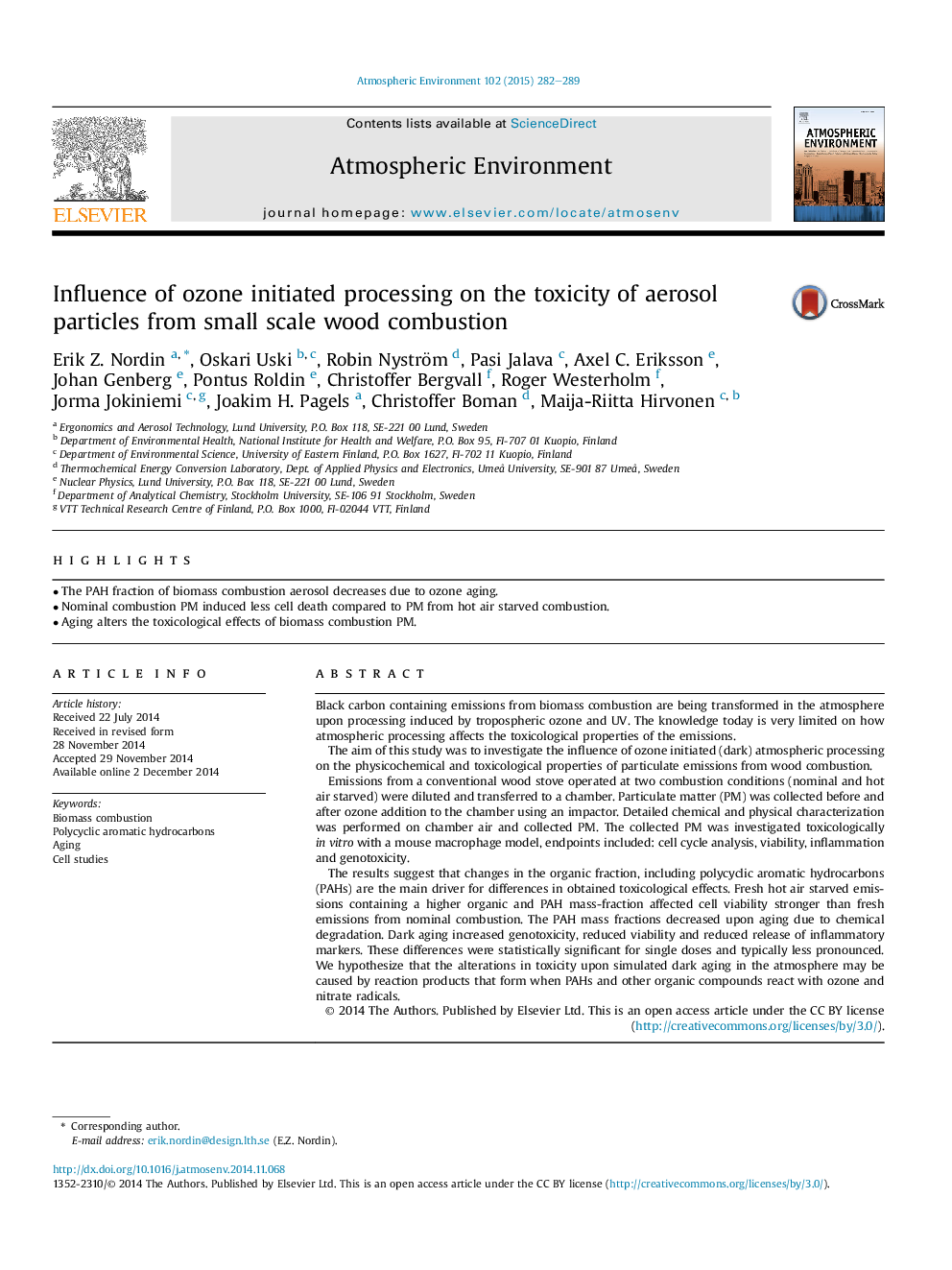| Article ID | Journal | Published Year | Pages | File Type |
|---|---|---|---|---|
| 6338868 | Atmospheric Environment | 2015 | 8 Pages |
Abstract
The results suggest that changes in the organic fraction, including polycyclic aromatic hydrocarbons (PAHs) are the main driver for differences in obtained toxicological effects. Fresh hot air starved emissions containing a higher organic and PAH mass-fraction affected cell viability stronger than fresh emissions from nominal combustion. The PAH mass fractions decreased upon aging due to chemical degradation. Dark aging increased genotoxicity, reduced viability and reduced release of inflammatory markers. These differences were statistically significant for single doses and typically less pronounced. We hypothesize that the alterations in toxicity upon simulated dark aging in the atmosphere may be caused by reaction products that form when PAHs and other organic compounds react with ozone and nitrate radicals.
Related Topics
Physical Sciences and Engineering
Earth and Planetary Sciences
Atmospheric Science
Authors
Erik Z. Nordin, Oskari Uski, Robin Nyström, Pasi Jalava, Axel C. Eriksson, Johan Genberg, Pontus Roldin, Christoffer Bergvall, Roger Westerholm, Jorma Jokiniemi, Joakim H. Pagels, Christoffer Boman, Maija-Riitta Hirvonen,
